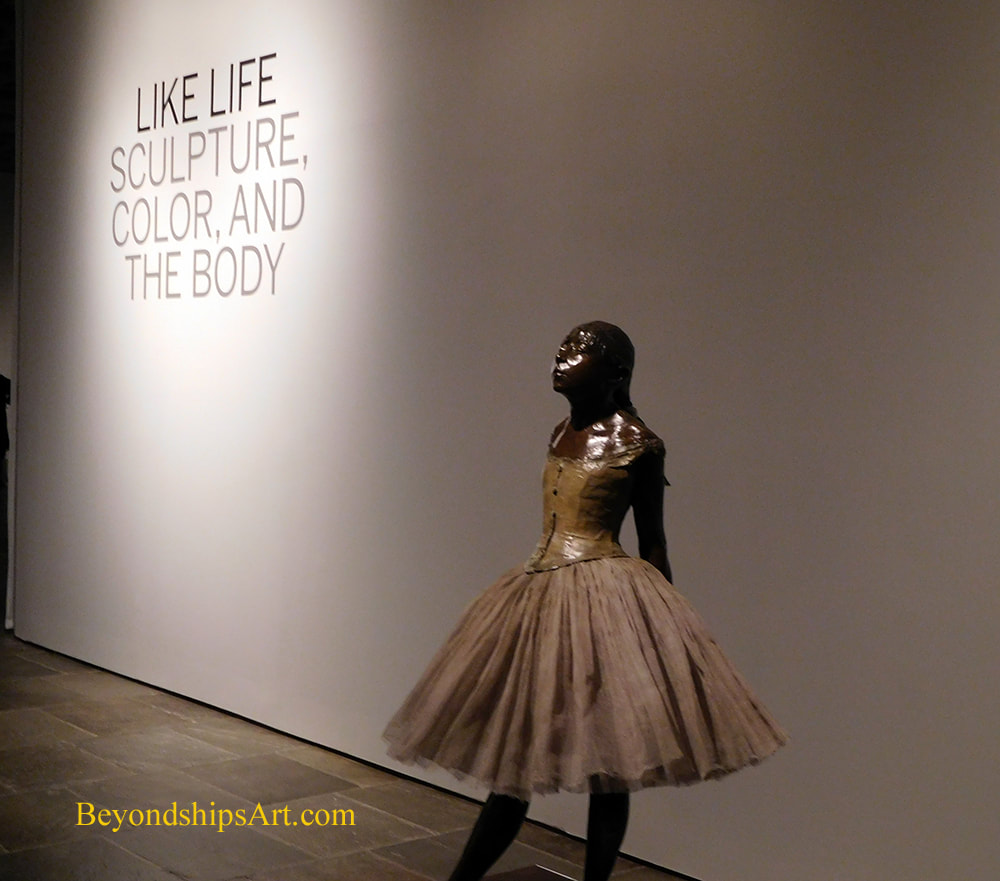|
“Like Life: Sculpture, Color, and the Body (1300–Now)” at the Met Breuer in New York City surveys 700 years of Western sculpture focusing on works that in one way or another attempt to approximate life. The works occupy two floors of the museum and are drawn from the Met's own collection as well as works on loan from elsewhere.
Western sculpture has long depicted the human form. However, at least since Medieval times, the majority of the sculptures of the human body have not tried to convey a life-like appearance. To illustrate, marble statues in museums are usually left white and bronze statues in the park are usually the color of the metal. They are meant as depictions of the human form rather than attempts to re-create a real person. No one would mistake these statues for real people. Throughout this period, however, there have been attempts to cross the border line traditionally observed by sculptors. Most often this has been done by painting the sculpture to give it the color of a real person. However, it has also been done by incorporating elements such as human hair in the sculpture or by dressing the sculpture in clothing. Plastics and similar materials have made it easier to approach a life-like look. This exhibition looks at the various ways sculptors have striven to create a life-like image. There are examples of religious sculptures painted to make the saint or other subject appear alive. A life-like appearance was thought by some to be helpful in persuading viewers to believe. Others, however, condemned such depictions as being akin to idolatry as people might worship the statue rather than the concept behind the statue. Edgar Degas clothed his famous sculpture of a young ballet dancer with an actual ballet costume. While the image is now very familiar, it was unsettling to 19th century viewers when it was first shown in Paris. Sculptures did not wear actual clothing. More recently, artists have not only clothed figures but by using technology and artificial materials have created figures so life-like that the viewer is left wondering whether the figure is really just someone standing still. Beyond the novelty of such statues, they can be used to capture a moment in time when surrounded by furniture or other props.. Traditionally, statues remained in one pose. Mannequins and other figures with movable parts generally were not considered art. However, the exhibition shows that artists have in the past and now have used movable parts in their sculpture. The exhibition does not present the works chronologically but rather by theme. For example, one gallery is devoted to the Pygmalion myth, in which the gods grant a sculptor's wish that the statue that he has created turn into a real woman. The works include a 19th century painting, a series of drawings by Pablo Picasso and John De Andrea's 1980 sculptural scene in which figures made of polyvinyl polychromed in oil depict the artist and his sculpture with life-like detail. “Life-like” is a phrase often used at funerals to describe the mortician's treatment of the corpse. Regardless of how closely a sculpture approximates life, the fact remains that it is not alive. Thus, there is a morbid element to this line of sculpture. In fact, one of the works is a corpse. The 19th century British philosopher Jeremy Bentham specified in his will that after his death his body would be dissected. After that was done, the body was to be preserved and brought out at meetings at the University of London His wishes were followed. Over the years, the head deteriorated and so a wax head was mounted on the body. The clothed body with its wax head is seated in a glass case. The smile indicates that Bentham would have enjoyed the viewers' discomfort. Along the same lines, there are sculptures with blood and/or vital organs showing. The fact that the sculptures are life-like makes these mutilations rather grisly even though no real person was involved. Although sometimes unsettling, overall, this is an interesting and thought-provoking exhibition. The exhibition shows that an inanimate object can be made to appear strikingly like a real person. Yet, oddly enough, in art, the essence of a person often comes through better in a less realistic image. Thus, one is left to ponder what it is that sets a living being apart. Comments are closed.
|
AuthorRich Wagner is a writer, photographer and artist. Archives
November 2018
Categories
All
|

 RSS Feed
RSS Feed